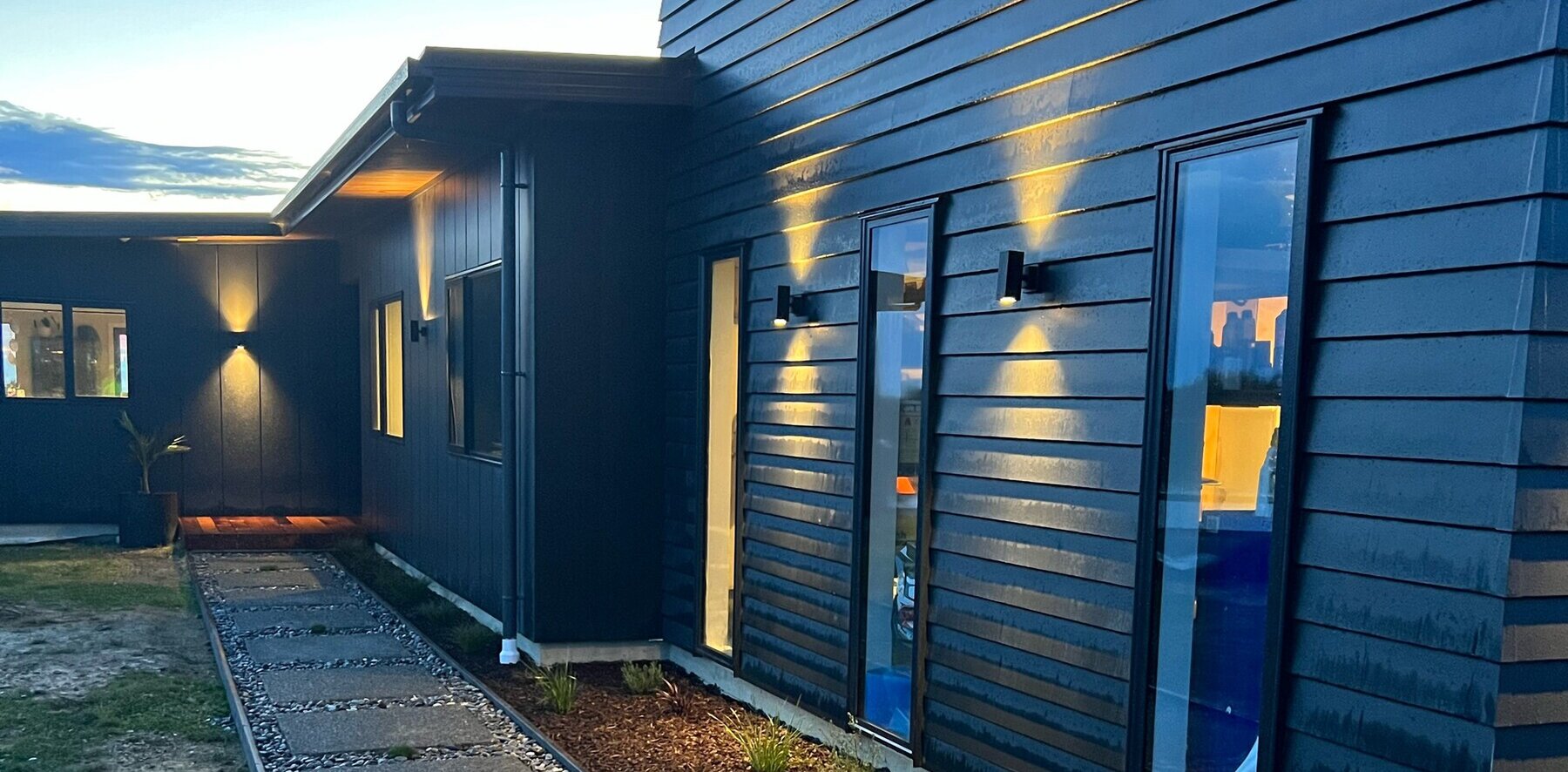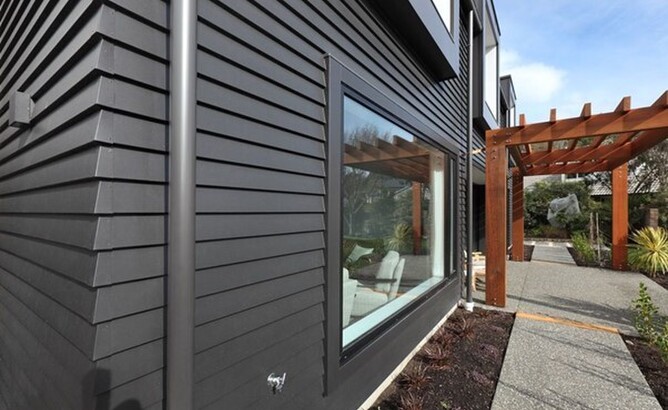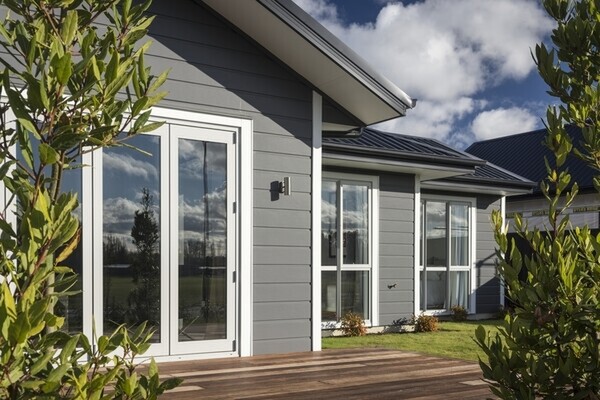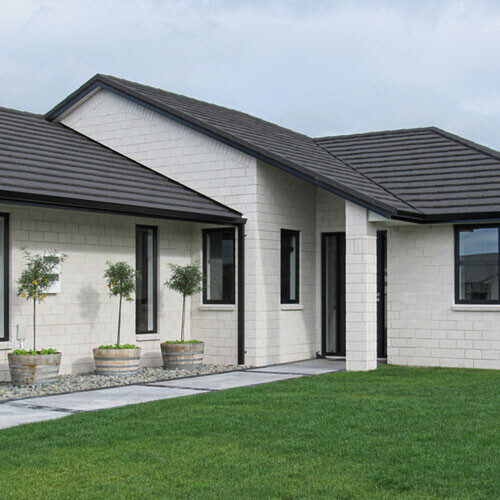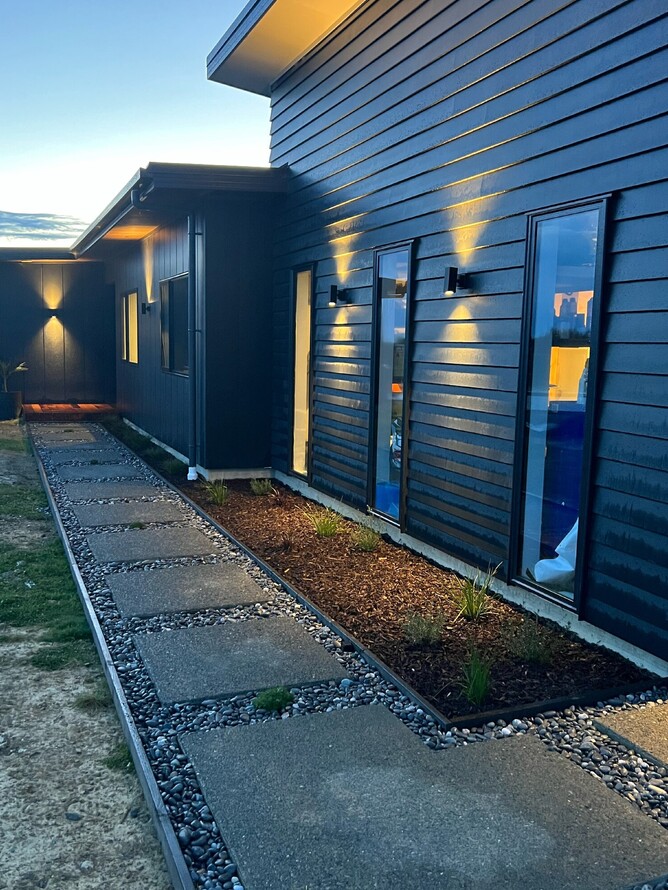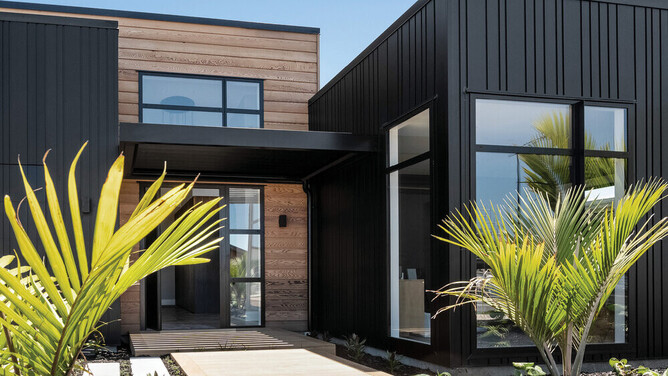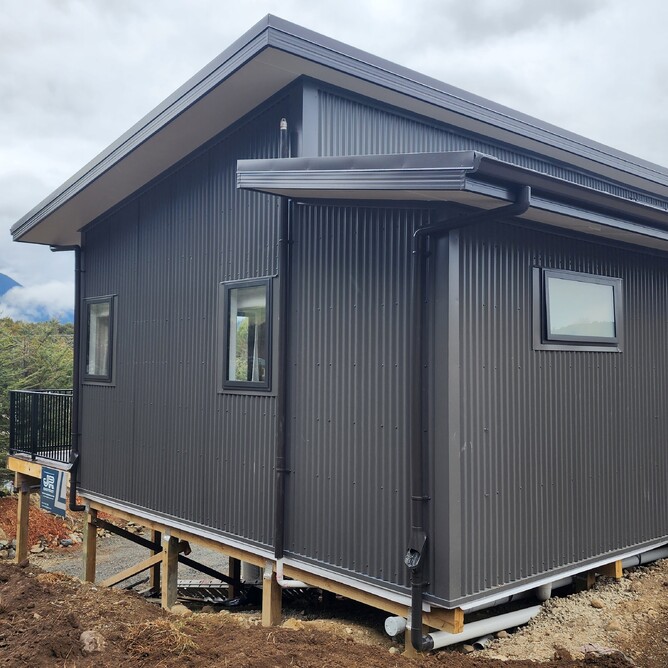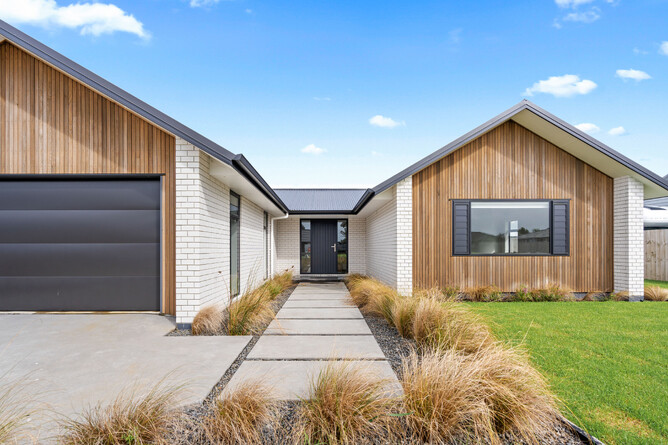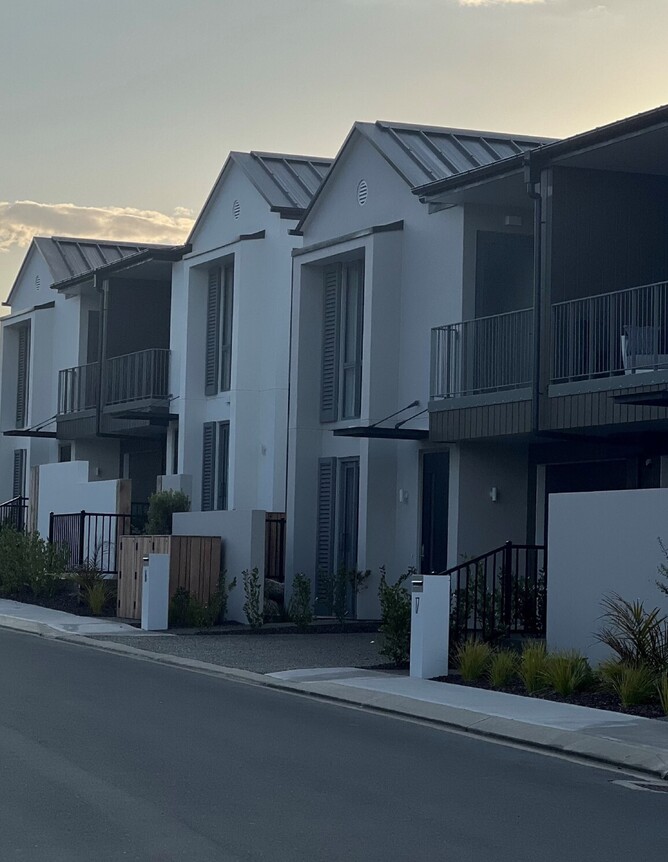Are you unsure about the cladding you should use for your new home or Renovation? Or does your current cladding appear to be dilapidated and in need of a re-clad?
When it comes to cladding options in New Zealand, it can be difficult to decide which material to use, when to repair, and when to replace.
So, if you're at a crossroads with options or you are planning a new build or renovation, this comprehensive cladding guide is for you.
We answer your biggest cladding questions, like:
What about Leaky Homes in NZ?
What cladding options are available in NZ?
What’s better: brick or weatherboard?
What are the pros and cons of different cladding materials?
What cladding option should I choose for my new build or reclad?
Should I repair or reclad?
How can I maintain my cladding?
What cladding options are available in New Zealand?
Timber weatherboards
Brick (or brick veneer)
Stone
Vinyl weatherboards (UPVC)
Fibre cement weatherboards
Metal (aluminium and steel)
Monolith (various types).
These are some of the most common, but far from exhaustive. There are numerous variations, materials, and installation profiles available for each type of cladding.
A note on Leaky Homes in NZ
If you own an older house, or are looking to buy a house with cladding of this type, it’s recommended to get a property inspection or weather tightness report to help you carry out your due diligence before buying or repairing.
The Leaky Homes saga highlighted the important role that cladding plays in a building’s structural integrity.
Buildings that have a high risk of leaking were mostly built between the late 1980s and the mid-2000s, using plaster-style monolithic cladding systems (they typically have an unbroken or smooth appearance).
The main issue with Leaky Homes was moisture getting in between the outside of the house (the cladding) and the inside walls.
What’s better: Brick or weatherboard?
Brick and weatherboard are two of the most popular cladding materials in New Zealand. The short answer is that both are excellent choices — it all depends on your space, weather conditions, location, and maintenance.
It goes without saying that choosing cladding for your new home entails more than just deciding what looks best. It also depends on the type of home you're building, what your local authority allows, the cost of various cladding types, and the location of the house. Here are some useful comparisons that will help you decide.
Weatherboards: Pros and cons
Highly versatile, as weatherboards can be manufactured using three different materials: timber, fibre-cement and UPVC
Timber weatherboards are the traditional choice, giving a warm feel to any building, but are vulnerable to moisture, heat and splitting. Requires more maintenance than the other materials, which include regular re-staining or repainting
Fibre-cement weatherboards are durable and very absorbent, so must be painted to become watertight
UPVC or plastic weatherboards are not as popular, but clip together rather than needing nailing
Brick: Pros and cons
Bricks are usually made from clay or concrete. Concrete bricks have the advantage of being able to be made anywhere, while clay bricks need a local clay source to stay affordable
Both concrete and clay bricks are available in a wide range of colours and textures
Good thermal insulation, known for weather resistance and longevity with little to no maintenance (if the brick isn’t painted)
Susceptible to damage in earthquake-prone areas, especially if not mounted correctly. It can be time consuming to install and labour intensive which can make it an expensive option.
Brick vs. weatherboard comparisons
Space: Bricks necessitate a larger cavity between the wall and the brick. They are also thicker than weatherboards, resulting in a larger footprint. If space is at a premium, a weatherboard is the best option.
Weather conditions: If your home is in a hot, sunny area, weatherboards are more likely to split and require extra maintenance. Bricks will hold the heat longer, but they are a good choice for homes near the beach; they last longer in the salty wind and rain and require less maintenance than weatherboards.
Location: Another factor to consider is how the materials will be transported to your site. The further they have to travel, the higher the cost and environmental impact. Ask your Builder about the material delivery costs of brick versus weatherboard.
Longevity: With proper maintenance, timber cladding can last 40 years or more. To be approved under the Building Code, new-built homes must include a maintenance programme for any timber cladding. Bricks can last 60-80 years if well maintained and repointed as needed.
What are the pros and cons of other cladding materials in NZ?
Stone
Pros: It has a long lifespan, is fire resistant and durable. It adds a natural, high-end appeal to a home, and is complementary to other cladding materials such as concrete and timber
Cons: It’s considerably more expensive than other cladding options and can be time-consuming to install to the weight, adding to the overall cost.
Vinyl weatherboards (UPVC)
Pros: Inexpensive, durable, and needs minimal maintenance. Plenty of finish options including smooth and wood grain to achieve a timber effect, making it a popular alternative to timber
Cons: It can become brittle in extreme weather environments and has the potential to fade and warp over time. UPVC may need replacing sooner than other cladding types in certain conditions.
Fibre cement weatherboards
Pros: Easy to install, durable and requires less maintenance than timber weatherboards. More resistant to moisture and rot due to the paint covering which can come in a variety of colours
Cons: Heavier than timber weatherboards, subject to expansion and contraction which can end up putting the weatherboards out of line.
Metal (aluminium and steel)
Pros: Fully recyclable, available in a range of colours and styles including weatherboard and industrial panels. Can last 25-40 years and longer with maintenance, with aluminium generally lasting longer than steel and coloured steel
Cons: Can usually be more expensive, and aluminium composite panel (ACP) can be more susceptible to weather-related damage.
Monolith
There’s three common materials used for monolith style cladding: plastered polystyrene, plastered fibre cement, or stucco (sand/cement mix).
Pros: Modern plaster cladding systems have adapted since 2004 with the introduction of cavity systems and stricter code requirements. With learnings taken from the Leaky Homes saga, you can still use plaster to get a smooth and seamless finish
Cons: Buildings with this cladding (built between the late 1980s and the mid-2000s) need to be inspected thoroughly as they are at risk of having weather-tightness problems.
What cladding option should I choose for my new build or reclad?
NZ law only requires cladding to last 15 years. Isn't this crazy? Especially since a modern house is expected to last for over 50 years.
Consider this when making your cladding decision, and if you have the budget, go with a higher-spec product.
Tips for choosing new cladding materials
Check the insulation rating (R-value)
Balance the installation cost against ongoing savings
Consider your local climate and weather requirements
Consult whether your choice will affect your home’s structural integrity
Check the fire resistance of each option
Utilise our Cost Estimator to get an idea of your budget.
Should I repair or reclad?
If you've discovered damage to your cladding or suspect it's past its prime, you have a few options. Let us take timber weatherboards as an example.
Option A: Targeted repairs
Target repairs are good for removing and replacing a small area of damage e.g. rotten wood in a couple of weatherboards, where the extent of the damage is limited to the cladding only (and not structural damage). The repair can be relatively inexpensive, with costs involving replacement timber and the time to bog, sand and repaint the area.
Option B: Partial reclad
Partial re-cladding may be a good option where the damage is not widespread and can be isolated to a single face, cladding type or portion of a clearly defined wall area. It’s important to get to the root of the issue to ensure the same defects don’t exist in other areas of the cladding.
Option C: Full reclad
Re-cladding your home will not only breathe new life into its appearance, but it’ll also bring it up to the current Building Code. A full re-clad gives you the ability to identify and repair all damage to framing and linings and get to the bottom of any water leakage. It’s a big job that requires careful evaluation before being confirmed as a worthwhile renovation. For monolithic-clad buildings with face-fixed cladding, full re-cladding is often the most appropriate solution to address and achieve on-going weather tightness performance.
How can I maintain my home’s cladding?
Regular cladding maintenance can significantly increase the life of your cladding materials. Here are some tips for maintaining your cladding:
It’s always best to check the manufacturer’s maintenance requirements, they vary greatly between materials
Clean once a year for most locations, and three times a year if next to marine and sea spray zones
Water-blasting can lead to long-term damage, so try to carry out cleaning with a low-pressure hose, a soft brush and a gentle detergent
A good paint job goes a long way, but make sure the paint used is compatible with the cladding.
Key takeaways
These are the key takeaways to remember when considering your cladding options in New Zealand.
When looking to buy an older home, do your due diligence on the cladding type (especially around leaky homes).
Weigh your cladding options in New Zealand by considering the space you have, the weather environment, your location, and the longevity.
Brick is better for seaside properties, and weatherboard is good if you're limited in floor plan space.
The advantages and disadvantages of various cladding materials are helpful in narrowing down your choice, but it will ultimately come down to your budget and material availability.
You always have options with cladding repairs; you can do a targeted repair, partial reclad, or full reclad depending on the extent of the damage.
A good rule of thumb for maintenance is to clean once a year in most locations and three times a year for seaside locations
There you have it—a comprehensive guide to cladding options in New Zealand. We hope it's made life a little easier for choosing a cladding material and knowing what kind of cladding repairs you can do to keep the value of your home.
Get In touch with JR Construct to talk about your project and cladding options.
